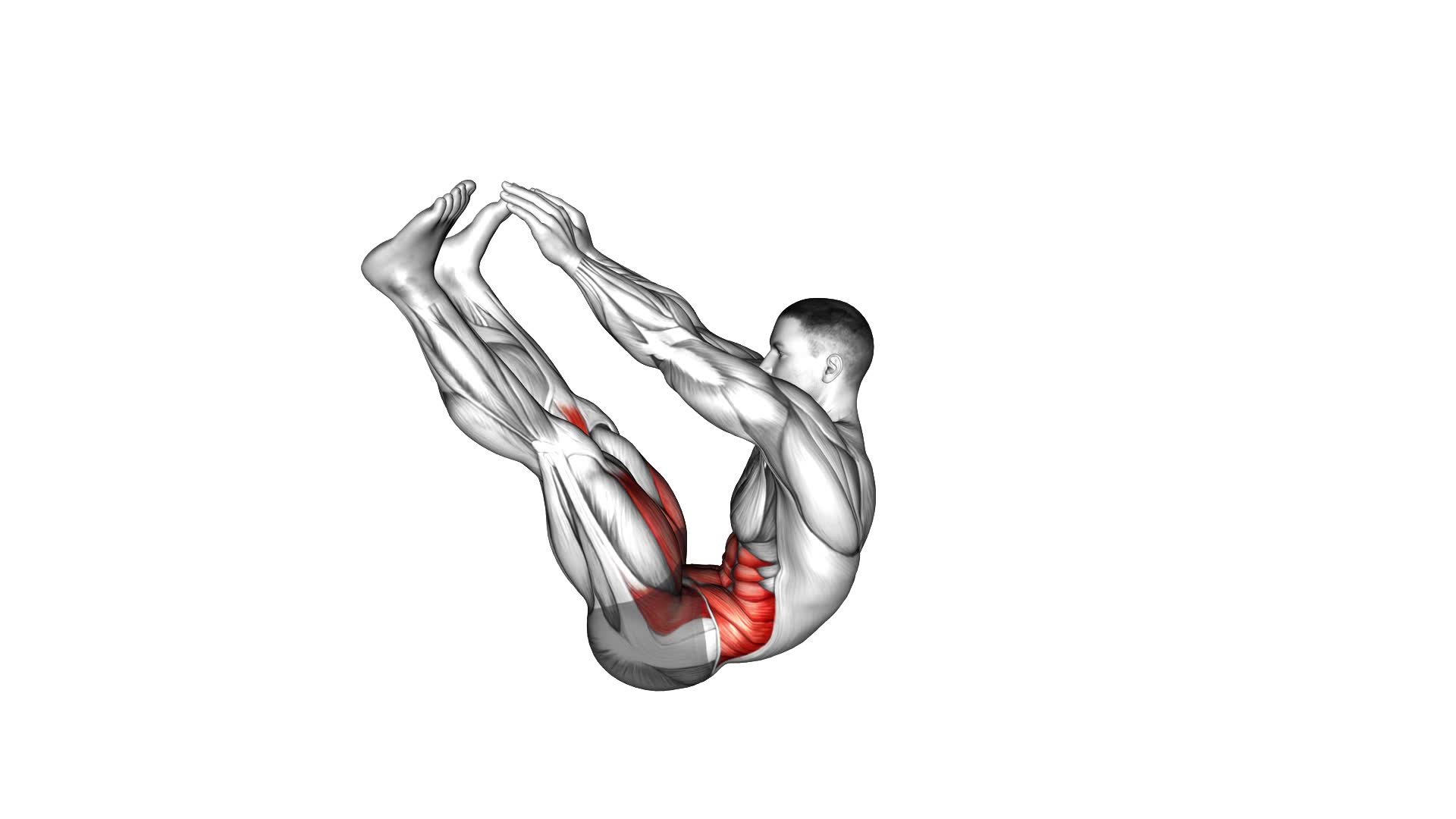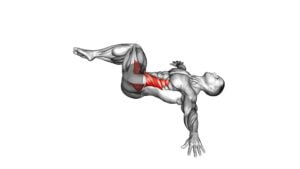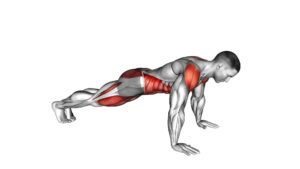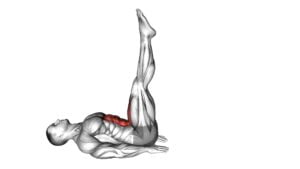V-up (male) – Video Exercise Guide & Tips

Looking to take your workout to the next level? Check out the V-up (male) video exercise guide and get ready to sculpt those abs!
Watch This Exercise Video
In this informative and precise article, you'll find tips and tricks to ensure proper form and technique, as well as modification options for beginners and advanced variations for increased intensity.
Learn from common mistakes to avoid and get expert tips for maximizing your results.
It's time to v-up and conquer your fitness goals!
Key Takeaways
- Engage core muscles and lift upper and lower body simultaneously
- V-up targets abs, hip flexors, lower back, and obliques
- Modification options for beginners include bent knee V-up and leg raise
- Advanced variations for increased intensity include weighted V-up and V-up twist
Proper Form and Technique
To perform a V-up correctly, engage your core muscles and lift both your upper and lower body off the ground simultaneously. One common misconception about the V-up exercise is that it primarily targets the abdominal muscles. While it does work the abs, it also engages other muscles such as the hip flexors, lower back, and obliques. This full-body exercise is a great way to strengthen your core, improve your balance, and increase your overall body control.
The benefits and advantages of incorporating V-ups into your workout routine are numerous. First and foremost, this exercise helps to build a strong and stable core, which is essential for maintaining proper posture and preventing back pain. Additionally, V-ups can enhance your athletic performance by improving your ability to generate power from your core muscles. They also help to increase your flexibility and range of motion in the hip flexors and hamstrings.
To get the most out of your V-up workout, be sure to maintain proper form and technique. Keep your legs straight and toes pointed, and aim to touch your toes with your fingertips at the top of the movement. Remember to breathe throughout the exercise and avoid straining your neck or lower back. With consistent practice, you'll soon reap the benefits of this challenging yet rewarding exercise.
Modification Options for Beginners
Start by performing a modified version of the V-up exercise to accommodate your fitness level as a beginner. As a beginner, it's important to ease into the exercise and gradually increase the intensity. One modification option is to perform a bent knee V-up.
Lie on your back with your knees bent and feet flat on the ground. Place your hands by your sides, palms facing down. Engage your core and lift your shoulder blades off the ground while simultaneously raising your bent knees towards your chest. Reach your hands towards your knees, keeping your lower back pressed into the ground. Pause for a moment at the top, then slowly lower your shoulder blades and knees back to the starting position.
This modification helps to reduce the strain on your lower back while still targeting your abs.
Another beginner-friendly exercise is the leg raise. Lie on your back with your legs straight and your arms by your sides. Keeping your legs together, engage your core and lift your legs towards the ceiling, making sure to keep them straight. Once your legs are perpendicular to the ground, slowly lower them back down to the starting position.
This exercise targets your lower abs and is a great alternative for beginners who may find the V-up too challenging.
Advanced Variations for Increased Intensity
To increase the intensity of the V-up exercise, try incorporating advanced variations into your routine.
One advanced modification you can try is the weighted V-up. This involves holding onto a dumbbell or a medicine ball while performing the V-up motion. By incorporating resistance, you're challenging your core muscles even more, making the exercise more intense and effective.
Another advanced variation is the V-up twist. Instead of reaching for your toes in the traditional V-up, twist your torso to one side and reach for your opposite foot. Alternate sides with each repetition. This modification adds an extra rotational component, engaging your obliques and enhancing the overall difficulty of the exercise.
Incorporating advanced modifications into your V-up routine not only increases the intensity but also helps to target different muscles in your core. By challenging your body in different ways, you can continue to progress and improve your strength and stability.
Now that you're familiar with advanced variations to increase the intensity of the V-up exercise, let's move on to the next section where we'll discuss common mistakes to avoid.
Common Mistakes to Avoid
Avoid falling into common mistakes when performing the V-up exercise. By being aware of these mistakes, you can ensure that you're getting the most out of this exercise and minimizing the risk of injury.
One common mistake is using momentum to lift your legs. It's important to engage your core muscles and use them to lift your legs rather than relying on swinging or jerking motions.
Another mistake to avoid is straining your neck. Keep your neck relaxed and in line with your spine throughout the exercise.
Additionally, make sure to maintain proper form throughout the movement. Keep your legs straight and your toes pointed, and avoid bending your knees or hunching your back.
Lastly, don't forget to breathe. Many people tend to hold their breath while performing V-ups, but it's important to breathe steadily throughout the exercise to maintain oxygen flow to your muscles.
Tips for Maximizing Results
How can you optimize your results while performing V-ups? Here are some tips to help you maximize your gains:
- Stay consistent with your diet: To see the best results from your V-up workouts, it's important to fuel your body with the right nutrients. Focus on consuming a balanced diet that includes lean proteins, healthy fats, and plenty of fruits and vegetables. Avoid processed foods and sugary drinks, as they can hinder your progress.
- Allow for proper recovery: Recovery is just as important as the actual exercise. Make sure to give your body enough time to rest and recover between V-up sessions. This includes getting enough sleep, staying hydrated, and incorporating active recovery techniques such as foam rolling or stretching.
- Mix up your routine: While V-ups are a great core exercise, it's essential to vary your routine to keep your body guessing and prevent plateaus. Incorporate other core exercises like planks, Russian twists, or bicycle crunches to target different muscles and keep your workouts challenging.
By following these diet tips and recovery strategies, you can optimize your V-up workouts and achieve the best possible results. Remember to listen to your body and make adjustments as needed.
Keep pushing yourself and stay consistent, and you'll be on your way to a stronger core in no time.
Frequently Asked Questions
How Many Repetitions of the V-Up Exercise Should I Do in a Single Set?
To get the most out of the v-up exercise, it's important to determine the right number of repetitions for a single set.
While there's no one-size-fits-all answer, it's generally recommended to start with 10-15 reps per set. However, you can modify this based on your fitness level and goals.
The v-up exercise offers various benefits, including strengthening your core muscles and improving your overall stability and balance.
Can the V-Up Exercise Be Modified for Individuals With Lower Back Pain?
If you have lower back pain, you might need to modify the v-up exercise to avoid aggravating your condition.
There are alternative exercises that can help strengthen your core without putting too much strain on your lower back.
It's important to consult with a fitness professional or physical therapist who can guide you in finding the right modifications and alternative exercises that will work best for your specific needs.
Are There Any Variations of the V-Up Exercise That Specifically Target the Obliques?
There are variations of the V-up exercise that specifically target the obliques. These variations can provide additional benefits by engaging the side muscles of your core.
By adding a twist or rotation to the V-up exercise, you can effectively work your oblique muscles. This variation helps to strengthen and tone your obliques, enhancing your overall core stability and balance.
Incorporating these variations into your workout routine can help you achieve a more well-rounded abdominal workout.
Can the V-Up Exercise Be Performed Using a Stability Ball or Other Equipment?
Using a stability ball for the V-up exercise can be a great way to challenge your core and add variation to your routine. It requires more balance and stability, activating different muscles.
If you don't have a stability ball, don't worry! There are alternatives to V-up exercise equipment that you can try, such as using a yoga mat or a towel on the floor. These options can still provide a good workout for your abs.
How Often Should I Incorporate the V-Up Exercise Into My Workout Routine for Optimal Results?
To get optimal results, you should incorporate the v-up exercise into your workout routine regularly.
This exercise is great for weight loss as it engages multiple muscle groups and helps burn calories.
It also strengthens your core, improving stability and posture.
Aim to include the v-up exercise at least two to three times a week in your workouts.
Make sure to maintain proper form and gradually increase the intensity for maximum benefits.
Conclusion
In conclusion, mastering the v-up exercise requires proper form and technique to ensure effectiveness and prevent injury.
Beginners can opt for modification options to gradually build strength and flexibility.
For those seeking a challenge, advanced variations can be incorporated to increase intensity.
It's important to avoid common mistakes and follow tips for maximizing results.
By consistently practicing the v-up exercise with precision and knowledge, individuals can achieve their fitness goals and improve their overall core strength.

Author
Years ago, the spark of my life’s passion ignited in my mind the moment I stepped into the local gym for the first time. The inaugural bead of perspiration, the initial endeavor, the very first surge of endorphins, and a sense of pride that washed over me post-workout marked the beginning of my deep-seated interest in strength sports, fitness, and sports nutrition. This very curiosity blossomed rapidly into a profound fascination, propelling me to earn a Master’s degree in Physical Education from the Academy of Physical Education in Krakow, followed by a Sports Manager diploma from the Jagiellonian University. My journey of growth led me to gain more specialized qualifications, such as being a certified personal trainer with a focus on sports dietetics, a lifeguard, and an instructor for wellness and corrective gymnastics. Theoretical knowledge paired seamlessly with practical experience, reinforcing my belief that the transformation of individuals under my guidance was also a reflection of my personal growth. This belief holds true even today. Each day, I strive to push the boundaries and explore new realms. These realms gently elevate me to greater heights. The unique combination of passion for my field and the continuous quest for growth fuels my drive to break new ground.







